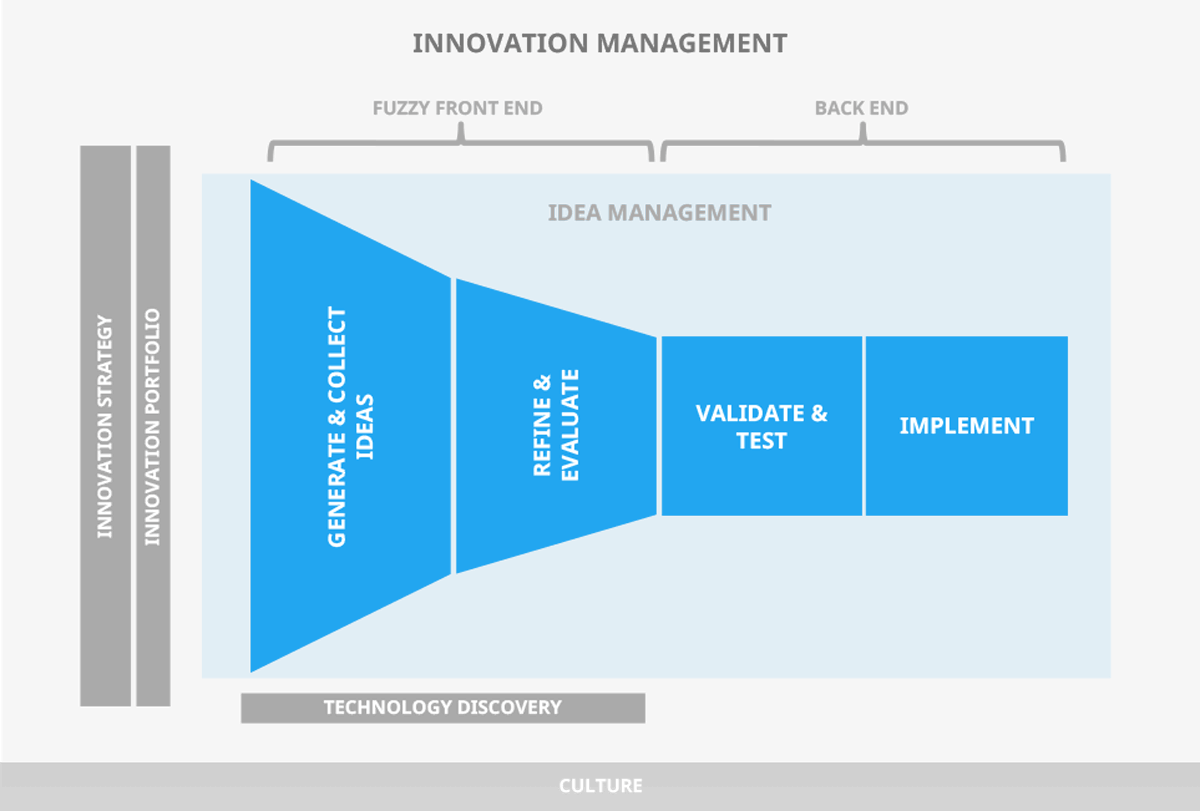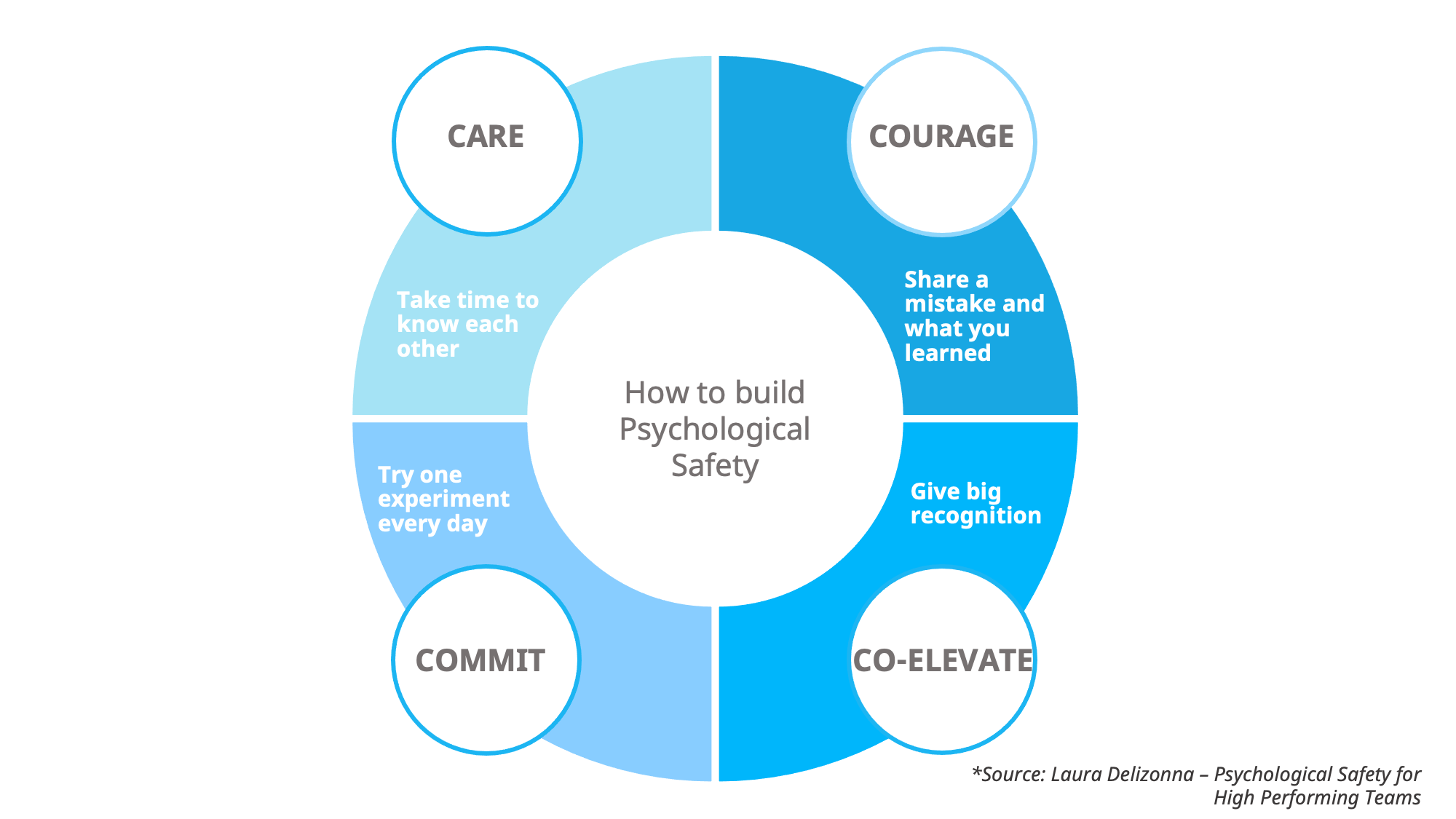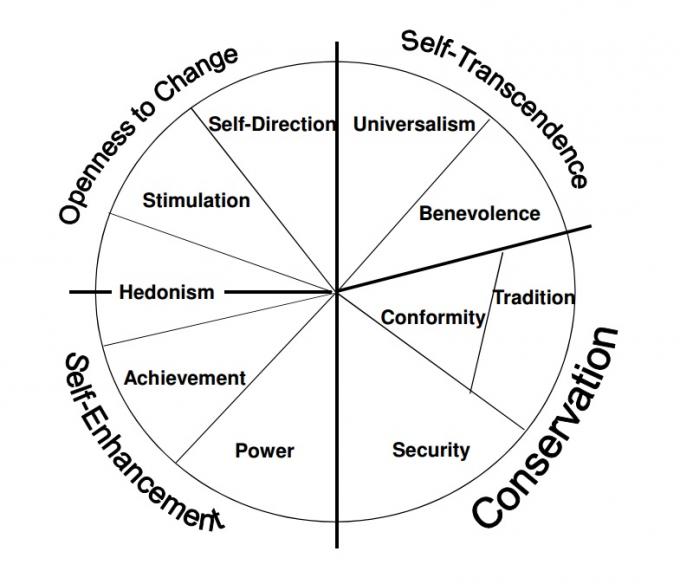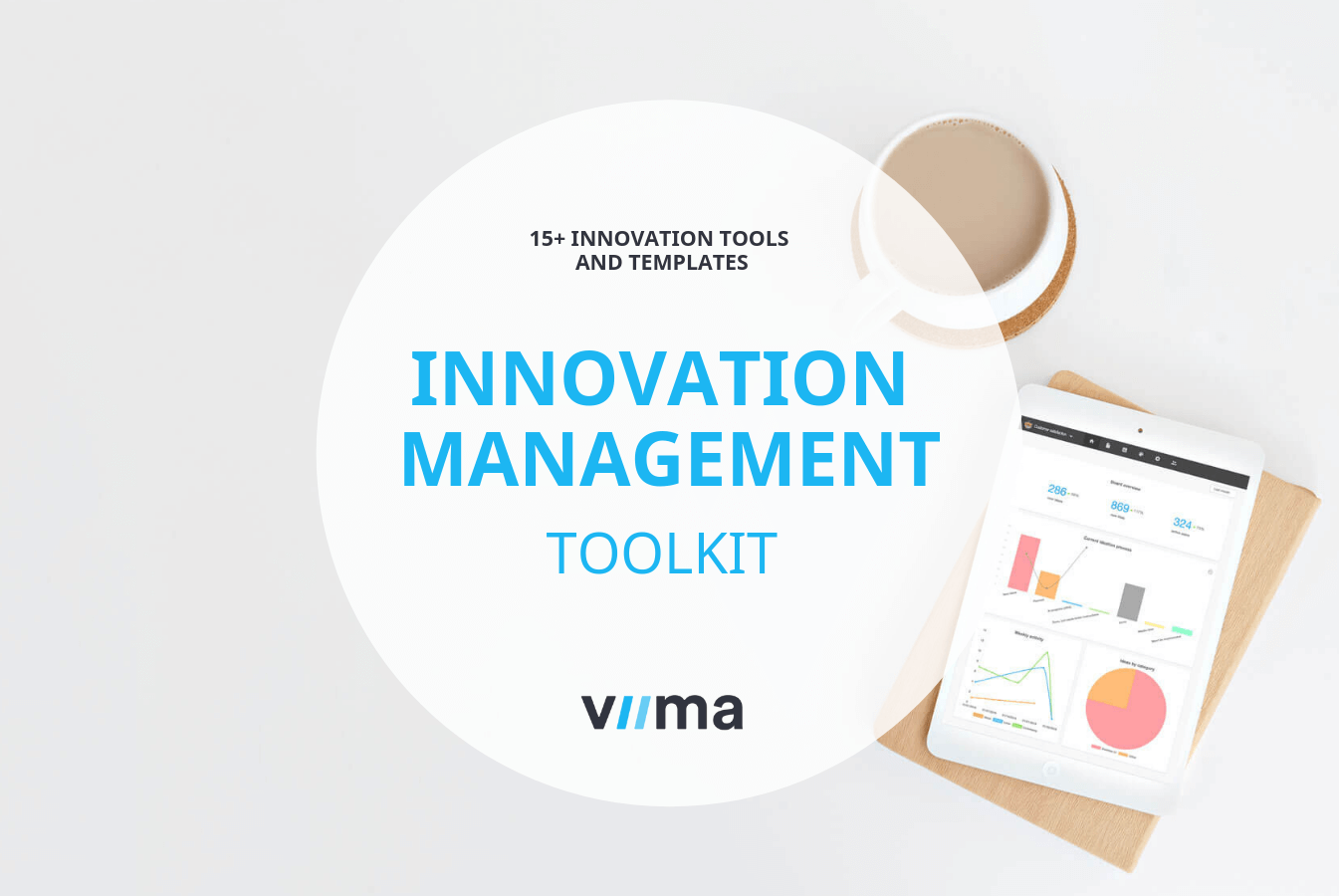What Can Leaders Do to Have More Innovative Teams?
Talent is one of the main drivers of innovation and its scarcity and high value makes it a frequent cause for concern for leaders from all over the world. And for good reason. Quality talent can make a business up to 800 times more productive.
But some of the biggest managerial challenges of senior leaders are finding the right talent and encouraging innovative behavior in employees. In fact, only 23% of managers and senior leaders believe they have good methods in place to acquire and retain the best talent.
So, how do you find the right people, retain them, and get them to drive more innovation? Putting together innovative teams and making sure that you have the best talent in the organization is not just an HR responsibility. From top executives to managers and leaders, they all have a part to play in the quest for talent that can help the organization drive more innovation.
To this end, we wrote this article for people in large organizations, whether they are innovation managers, leaders, or executives, who want to build talented teams that can actually drive more innovation.
We’ll go through some important points on the characteristics of innovative employees and provide some practical tips on how to get better talent and tap into the potential of current workforce to drive more innovation.

Table of contents
Why organizations need more employees involved in, and trained for, innovation work
We know that at a global level there is a shortage of highly skilled employees, and that even large companies with all their resources, don’t excel at finding and retaining talent.
Even though unemployment is still a big problem in many areas of the world, the rapid pace of change in recent times have showed that there is also an increasing shortage of talent.
Before 2020, a Gallup survey revealed that 73% of respondents were thinking of leaving their job. The pandemic hit, along with a crisis for many workers, but also with a wakeup call for other employees. And the Great Resignation, where 25 million people in the US quit their jobs in the second half of 2021, is proof of these unpredictable changes.
So, maybe now more than ever organizations should make sure that they are prepared and that they have the right workforce to help them thrive in the future.
Finding top talent is difficult, it takes time and it’s expensive. There is no way around it, organizations need more people once they start growing. At the same time, inside most companies there are also huge opportunities to unlock value from the existing workforce.
-
Untapped internal innovation potential
As it’s becoming more difficult to recruit top talent who can make more innovation happen, businesses that lack the knowledge and support for future growth are on shaky grounds.
But the conversations around the war for talent are not enough to provide real solutions on how to get more people involved in innovation work. Of course, as businesses grow, the need for more people to support that growth is obvious. However, when it comes to innovation capabilities, we don’t hear that often discussions around internal scouting and training of the existing workforce who can turn into assets for innovation.
How to tap into the full potential of employees? The approaches can vary, but a good start that works for almost any company, is to include everyone in the conversation, create a sense of belonging and give them a voice. This option is always worth pursuing and for a more in-depth guide on how to do that you can also check our article on collecting ideas from frontline employees.
Include everyone in the conversation, create a sense of belonging and give them a voice.
A second approach is to actually have them implement and drive innovation, but this is more complicated and requires a very structured approach and well implemented innovation management processes.
Either way, employees would benefit from training on innovation as is understood and applied within your organization. A common understanding of what innovation is for you, as a company, and how to achieve it, can reveal more potential than you first imagined you had.
There is still some controversy around the topic, and some believe that not everyone can be an innovator. While that can be true to some extent, innovation comes in different forms and shapes and almost everyone can contribute to innovation in one way or another if the context allows for it. Which takes us to our next point.
-
Innovation can be everyone’s job
While innovation might not come natural to most people, it doesn’t mean that we can’t learn the skills and mindset required for it. Even though not everyone has the curiosity and openness to explore new opportunities and ways of improving their work, they should still be encouraged and incentivized to be more innovative. And we believe it all starts at the top.
Innovation should be approached both top-down and bottom-up, but unless it starts from the top with great leaders who set the tone and support innovation, the chances of success are slim. At the same time, the front-end of innovation is where everyone can and should contribute, while the back-end execution requires more specialized skills and knowledge.

The bottom line here is that you can achieve a lot more innovation if you give everyone an opportunity to contribute. Most ideas, especially those that lead to incremental innovation come from the front-line employees, as they are the ones in close contact with your customers, products, and services. Even though most of these won’t necessarily change the trajectory of your business, when you put them together, they can make a huge difference in the performance of the core business.
-
Knowledge - source of innovation and competitive advantage
Speaking of competition, intangible assets, more prominently knowledge, are one of the major competitive advantages for organizations. Even more, tacit knowledge, the know-how, wisdom and experiences of employees which is not codified or explicit, represents an important driver for innovation.
As soon as you start working on harnessing that knowledge by creating the environment that enables transparent communication and flow of information, you will have more people involved in everyday innovation activities like idea challenges.
If you promote an innovation culture, even if people themselves might not be innovators, they are still likely to support innovation instead of blocking it by being resistant to change.
Even if people themselves might not be innovators, they are still likely to support innovation instead of blocking it by being resistant to change.
So, if we look at it from this perspective, everyone in the organization can contribute to innovation with the right leaders at the helm, some good skills development programs, and a sound scouting system in place. But for that, we first need to understand what makes an employee innovative and what are the traits that define innovative thinking.
What makes employees innovative?
In simple words, innovation stems from a mix of creativity and action. However, even if creativity is important, it is often overrated compared to execution, which makes change happen and gets things done. To get to execution in the corporate setting, you also need good communication and collaboration.
At a macro level, things seem simple but at the micro level, the individual’s set of skills and traits required for innovation can’t be summed up in a couple of words.
 So, let’s see what makes someone innovative, what to pay attention to, and what skills innovators should learn and develop. This can help you assess whether some of your team members excel in some areas or if they need to refine other skills or behaviors.
So, let’s see what makes someone innovative, what to pay attention to, and what skills innovators should learn and develop. This can help you assess whether some of your team members excel in some areas or if they need to refine other skills or behaviors.
-
Growth Mindset
The road to innovation is paved with uncertainty and risk, so innovators will always need to push into the unfamiliar. This comes natural to those with a growth mindset, who are usually inclined to be more open to change. On the other hand, those with a fixed mindset will be more reluctant to try something new or explore beyond what they are used to.
In short, a growth mindset is compatible with innovation because those who possess it, believe their abilities can be developed through hard work and dedication. Innovation work will most certainly mean that you will fail at some point, or your assumptions will prove to be false. Those with a growth mindset are resilient, curious, and eager to learn, so such failures won’t hold them back.
There is a common misconception that a fixed mindset can’t be transformed, since it is after all, fixed. The good news is that neuroscience has proved the plasticity of our brains, which means that behaviors and mindsets can be changed, even at a more mature age. But more on that, in the next section.
-
Skills
As mentioned earlier, if you want to build an innovation culture and inspire innovative thinking within your organization, it’s not enough to have the most creative people. There are certain skills that encourage the proactive “doers” to act and execute on innovation.
Some of these skills for innovation are critical thinking, which helps with problem solving, curiosity, which allows for exploration and learning, good communication which enables collaboration and teamwork, and of course the hard skills necessary to actually implement innovation.
This is by no means an exhaustive list of skills for innovation, but they can be seen as the basis on which people can build and improve their skills. The key thing to remember is that for some types of innovation, you want people that can move things forward and get them done.
-
Values
Maybe less pragmatic, but just as important in getting more people on the innovation boat, are the personal values. Values guide behavior and explain behavioral patterns. We tend to act instinctively according to our core values and according to empirical studies, certain values foster innovative behavior while others might impede it.
Our previous article on cultural differences and innovation explains more in depth the relation between people’s beliefs and innovation, so we won’t go too much into detail here.
While some theories like the Theory of Basic Human Values of Schwartz or Hofstede’s cultural dimensions theory stem from cultural psychology and communication, they have been extended and applied to economics and the corporate world as well.
For example, one of the ten broad personal values identified by Schwartz, self-direction, is defined as someone being independent in thought, inclined to choose, create, and explore. On the other hand, someone that values conformity and security more, will be less inclined to accept change, or challenge the status quo.
These can be measured through the Schwartz Value survey and the Portrait Values Questionnaire. Of course, this is just one practical method, and it has its limitation, as it’s not always easy to apply in a corporate context. However, these methods can still be helpful in providing some guidelines on personality traits and values that are more inclined toward innovation.
So, let’s move from theory to practices that can encourage and nurture innovative behaviors in employees.
How to nurture innovative behavior in your organization
Most leaders concerned about the future of the organization they work for have asked themselves at some point how to unlock more innovation potential and it’s not easy to find the right answer. That’s because there is no single correct answer, but rather a mix of strategy, leadership approaches, resources, and practices.
The first noteworthy element that ignites innovation behavior is as simple as having the ambition to pursue specific goals that highlight the role and value of change and innovation.
Having the right goals that provide focus and direction is essential to set the stage and make it explicit that everyone has a role to play in improving the way they, and the company at large, operate and behave.
The next steppingstone that reinforces and support the goals are the processes that can lead to change and innovation. These are essential in strengthening teams that work on those goals and make things happen. Such processes will look different for each organization. Whether it’s a specific time allocation like the 15% or 20% rule for innovation, or idea management processes, these are crucial for long-term success.
These are all methods we’ve often talked about in our previous articles, and they are at the core of a systematic approach to managing innovation.
Now, there are also other methods that are essential in nurturing an innovative behavior and these are mostly related to leaders’ soft skills and their ability to create the environment where innovation can flourish.
-
Foster a growth mindset
As already mentioned, there is a myth that you either have the growth mindset or you don’t. In fact, brains keep on changing, together with the cognitive abilities, and a fixed mindset can be developed into a growth one. How to achieve this in practice?
Start by identifying the fixed mindset patterns in your employees. Is someone giving up quickly? Maybe they avoid challenges and prefer the comfort zone, or they avoid negative feedback and are always prepared with the answer “It’s not my job” or “I’m not good with words, or creative enough”. These are all signs that point to a fixed mindset.
To change this, set smart goals and offer learning opportunities that are aligned with those goals. People with a fixed mindset usually hang on to old habits because they had success with those, and they’ve been measured based on them. So, create reward systems that encourage new ways of working and challenge people to take risks.
People with a fixed mindset usually hang on to old habits because they had success with those, and they’ve been measured based on them.
For example, Tata Group worked on developing an innovation culture for many years and as part of their initiative they have a prize for the best failed idea. The purpose is not to fail for the sake of failing but to encourage innovation.
Such initiatives should come from leaders who are willing to address the root causes of their employees’ uncertainty and reluctance to novelty. However, to be able to implement similar initiatives, leaders should take a step back and consider another element, which is critical: psychological safety in the workplace.
-
Psychological safety
The concept of psychological safety dates to 1999 and it refers to the belief that one will not be punished or shamed if speaking up or coming up with ideas, questions or concerns. Studies show that when employees feel comfortable to challenge the status quo without fearing negative consequences, organizations can innovate faster and adapt well to change.
Leaders have the greatest impact on team climate, and they have the power to influence internal behaviors more than anyone. A McKinsey survey reveals how leaders should develop their skills through leadership programs that focus on specific skills. Among the skills that have the biggest influence on creating psychologically safe work environments are the open dialogue skills, sponsorship, and situational humility.
While the theory helps us understand the importance of psychological safety in the workplace, it doesn’t provide practical answers. So, let’s briefly look at some concrete examples that leaders can put in practice to inspire more trust, and safety.
A good place to start is Laura Delizonna’s framework for psychological safety, which is based on four key pillars: Care, Courage, Co-elevate, Commitment.

-
Care
Care is about empathy and the openness to understand one another even if you don’t agree. Showing care means practicing active listening, showing interest and empathy.
For example, some organizations have team rituals like check-ins. One technique is the PIE check-in when each person in the team takes a few seconds to talk about their Physical, Intellectual and Emotional state.
Another technique you could use is the Rose Bud Thorn, where you ask each person to share a positive of the week (rose), something that emerged (the bud) and something that is challenging (the thorn).
There are other techniques and most of them work well even in remote environments. Also, something as simple as coffee chats, ask me anything sessions, sharing rituals like celebrating birthdays or holidays can all help in showing care and empathy. Leaders should constantly offer their support, assess people’s needs and burnout risk.
-
Courage
To inspire courage, leaders first have to show courage. They should walk the talk and be open with their vulnerabilities, mistakes, and challenges. So, while it might be difficult for some, true leaders show the way by admitting when they don’t know something, asking questions and showing interest to learn and improve their skills. Owning errors publicly and as soon as they happen has a big impact on team morale and attitude towards failure.
As a leader you can share your learning journey where you include the goal, the adversities you faced, experiments you made and failed and lessons you learned.
-
Co-elevate
Co-elevate is about inspiring and empowering others to bring their best, not just cooperate. Study shows that leaders think they give recognition 80% of their time, while team members feel they receive recognition 30% of the time. There is a disconnect in how we communicate.
Some best practice to co-elevate is to express appreciation that is frequent and specific. What do you appreciate in someone’s approach? How did their work influence the results and you personally? What specific behaviors can you praise?
Just as important is to solicit input and how you do that makes all the difference. Instead of leaving room at the end of a meeting for people to add something, change the approach to ask opposing views, or what someone would do in your place, etc. Remember to thank those who speak up and give an opposing argument.
As you can see, there are many nuances when communicating, providing, and asking for feedback. Once you create procedure and different pathways that allow for contribution, things will get easier.
-
Commitment
Commitment is what brings everything together. Leaders need to commit to experiments and to try to do something differently. Set goals for things you want to change. You can start with one experiment every day.
Psychological safety and a growth mindset are essential if you want to unleash the innovation potential of employees. However, nurturing them takes time, so you won’t see results overnight. It’s important to remember that as leaders you set the scene and lead the way. Unless you take baby steps to display the innovative behavior you expect from others, you won’t be able to move the needle in the right direction.
Examples
Starting to adapt ideas implemented by other organizations is a common approach, but as Ravi Arora, VP of Group Innovation at Tata Sons puts it, simply copying processes used by others won’t lead to much innovation.
However, some practical examples can always help in providing some context and inspiration for what to consider in your organization. So, here are a couple of examples that hopefully can provide some takeaways to learn from.
-
Whirlpool
Whirlpool is an interesting example for several reasons. Innovation at Whirlpool is a core competency and they have been focusing for over twenty years on turning it into a management system that works like a machine that supports their vision on the long term.
To embed the structures and processes in the organization, they had to infuse the innovation mentality to the entire workforce of 70 000+ employees. It all started top down in 1999 when the executive team launched on their mission to change the corporate mindset and encouraged everyone to come forward with ideas. At a time when there weren’t known systems in place for managing ideas and innovation, it was a bold move that took time to develop and refine.
For example, employees go through an Innovation 101 training where they learn what innovation means at Whirlpool. Those interested can become Certified Innovation Mentors through other training opportunities. Thousands of innovation mentors facilitate the innovation cycle throughout the company and take pride in passing on the innovation mindset.
Their success in fostering an innovation culture and scaling innovation practices comes with its challenges. To be able to achieve those at scale, you need effective buy-in and pro-innovation champions/managers at all levels across all parts of the organization.
Thus, those who want to replicate it should be aware that a highly dedicated executive team has to run the show and allocate the financial resources required for such ambitious endeavors. It takes effective leadership and collaboration to bring about real change across a large organization, but the payoff can be well worth the effort.
-
3M
There’s also the option to allocate resources and encourage creativity by allowing employees to develop their skills or work on other projects that are not closely related to their everyday work.
Again, there are variations on how to best approach this. Maybe the first to come up with this idea was 3M back in 1948 when they launched the 15% program. In a time where organizations were highly rigid and hierarchical this was truly a new way of approaching innovation internally.
Employees could allocate 15% of their time to innovation, by pursuing something they have discovered or thought about during their usual work, but never had time for. This type of freedom has inspired others to follow suite, and Google came up with its famous 20% rule, that enabled employees to develop hugely successful products like Gmail, Google Earth, and AdSense, among other innovations.

However, as it’s expected with organization-wide strategic initiatives, they have their limitations. First of all, not all companies can afford it. At the end of the day, even if it’s just about giving people time, it’s time away from relevant work.
The approach can become rather pricy for those who don’t have the resources 3M has. Overall, 3M invests more than $1 billion in R&D, roughly 6% of its revenue. But in the long run, the investment pays off.
Secondly, even if you afford it, you still need the talent, leadership dedication and the right practices and processes. To achieve this, 3M developed over the years a culture that encourages, and facilitates innovation. Unless there is support from top management, nothing will happen with the new ideas and projects.
Regardless of the approach, what these examples show is that you can’t just let the ball in the employees’ court and expect them to become innovators overnight. As leaders, you are responsible of inspiring and driving change.
Conclusion
Neuroscience taught us that even as adults, our brains are malleable, so if some employees might seem resistant to change, disengaged or lack creativity, first ask yourself if there is something you can do differently. Maybe they don’t have the environment where they can flourish, or they are not led by people who allow them to shine.
Inevitably, there’s always going to be someone who resists change, who can’t be converted to a growth mindset or innovative thinking. This doesn’t mean that there isn’t room for improvement. Their support can contribute to incremental innovation and continuous improvements. It’s also more cost-efficient to train existing workforce than always looking for something you believe it’s missing.
When you’ll inevitably have to scout externally for new talent to support innovation work, consider a few key elements: the employer brand, innovation culture, leadership training programs, as well as the processes and mechanisms that facilitate innovation.
If you want to learn more about idea and innovation management, our Innovation System online coaching program is now completely free of charge for the first 1000 readers to sign up for it.







